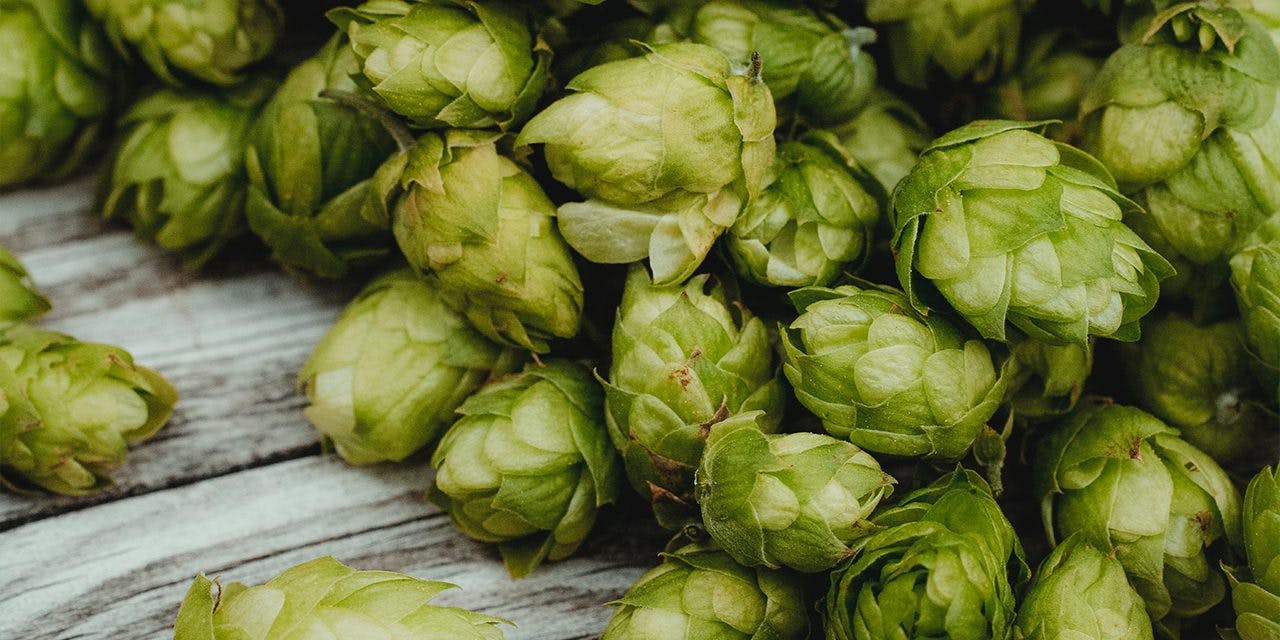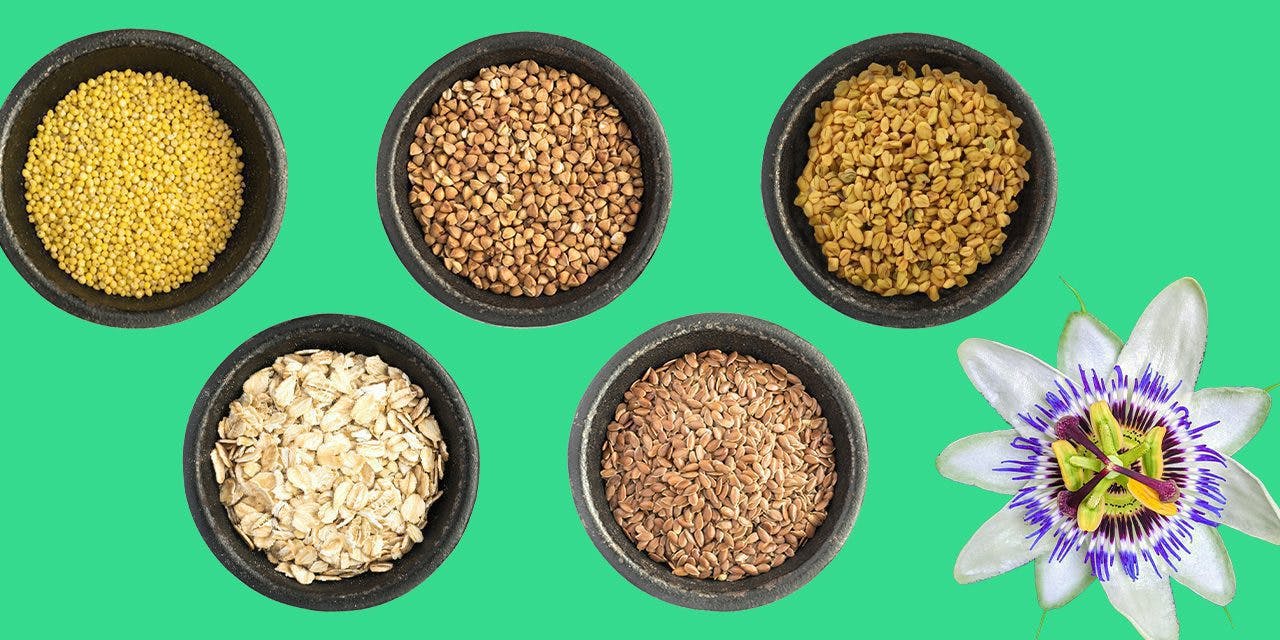Guide to Humulene: The Earthy Terpene Known for Its Medicinal Value

Article written by

Ruth LemonVP of Operations
Content reviewed by

Dr. Lewis JasseyMedical Director - Pediatric Medicine
Humulene (α-humulene or alpha-humulene) is a terpene and is a common presence in the cannabis plant. It’s been used in Traditional Chinese Medicine for centuries and is shown to have a range of health benefits, including as an antimicrobial and antitumoral.
Humulene was once named “alpha-caryophyllene. It has a peppery smell and is often found with beta-caryophyllene in plants like basil, sage, and clove.
Humulene may:
- Be an anti-inflammatory that can help alleviate allergic reactions.
- Act as an antibacterial agent.
- Potentially help with appetite suppression and weight loss.
Get your medical marijuana card
Connect with a licensed physician online in minutes.
What is Humulene?
Humulene, named after Humulus lupulus, the common hop plant, is found naturally in many plants, including cannabis, hops, black pepper, basil, ginseng, and sage. It is a common terpene or, more specifically, a monocyclic sesquiterpene.
Humulene contributes a spicy, herbaceous, or woody taste, reminiscent of a beer high in hops. It also contributes to the hoppy smell and taste of certain craft beers. Humulene has analgesic (painkilling), anti-inflammatory, and mild sedative effects.
Health Benefits and Uses
Humulene has been investigated in a plethora of recent biomedical research and used for even longer in the practice of Traditional Chinese Medicine. Alpha-humulene can be applied topically, through aerosol, and orally. It has widespread therapeutic benefits, including:
Anti-inflammatory properties
A study where alpha-humulene was isolated from the essential oil Cordia verbenaceae demonstrated extensive anti-inflammatory effects via oral treatments. Its anti-inflammatory properties were indistinguishable from dexamethasone, a recommended steroid anti-inflammatory.
Humulene’s strong anti-inflammatory properties have also been shown to reduce allergic inflammation in the airways with oral administration. Humulene is also effective in the management of inflammatory diseases.
Antitumor and cancer reduction
In combination with phytocannabinoids and additional terpenes, Humulene has demonstrated the ability to kill cancer cells, preventing their proliferation and reducing tumor growth.
In addition, it has demonstrated the production of reactive oxygen species, which contribute to humulene’s ability to kill cancer cells.
Analgesic
A 2019 study suggests that Humulene (high concentrations in Cordia verbenaceae) when combined with the medicinal plant Pterodon pubesens, acts synergistically to reduce pain in animal models. It is yet to be investigated; however, these results are strong and promising.
Antibacterial properties
Humulene has proven antibacterial properties against many harmful bacteria, including Bacteroides fragilis (cause of inflammatory bowel disease) and Staphylococcus aureus (causes staph skin infections).
Appetite suppression and weight loss
Humulene contributes to the entourage effect, working synergistically with cannabinoids like tetrahydrocannabivarin (THCV) to suppress appetite (anorectic). This has been proposed to decrease food intake and subsequent weight loss. However, the evidence is anecdotal at this point.
As with many other terpenes, Humulene is toxic to many bugs and can be used as an insect repellent.
Potential Risks and Side Effects
As with any other chemical compound, there are certain risks to using larger doses of humulene. These include:
- Skin irritation.
- Serious eye irritation.
- Respiratory irritation (mucosal membranes in the upper respiratory tract).
In large inhaled doses (more than 48mg/kg), humulene has the potential to cause respiratory pulmonary emboli (a blockage in one of the pulmonary arteries in your lungs).
Cannabis Strains High in Humulene
Humulene is found in a large variety of cannabis strains (varieties). These strains tend not to demonstrate the usual appetite-boosting properties associated with other varieties of cannabis.
Aroma profiles including hops or fresh herbs with a peppery edge indicate cannabis strains with higher humulene concentrations. Some varieties of cannabis with higher humulene concentrations include:
Candyland – A cannabis variety with a relatively high THC concentration. In combination with other terpenes, Humulene gives this strain a sweet, spiced, earthy scent. Users describe this strain as stimulating.
Death Star – This variety is even higher in THC and has euphoric, psychoactive properties, and it has slightly higher humulene levels.
Girl Scout Cookies are common in therapeutic conditions due to their pain-relieving ability, nausea reduction, and sleep-promoting properties. This strain is indicated as having one of the highest humulene concentrations.
Royal Cookies – This strain has a mild level of Humulene and high THC, and it is well known for its relaxing properties.
Headband – Another good variety for relaxation. Headband, however, has a higher Humulene concentration and lower concentration of THC.
Sherbet – This strain is rich in humulene, with high levels of THC. As the name indicates, Sherbet has a sweet flavor profile.
White Widow – This variety has a definite earthy pine scent.
Super Sour Diesel – Another high concentration of humulene and THC. This variety is sour to the taste and is noted for its energizing effects.
It is important to note that humulene doesn’t interact with endocannabinoid receptors, so it can’t get you high. Terpenes can, however, boost cannabinoid activity and act as a sort of “mimic” of cannabinoids. Terpenes also affect other receptor systems (e.g., serotonin, dopamine), so they can contribute to the overall effects of cannabis in different ways.
Get Your Medical Card
Connect with a licensed physician online in minutes.
Frequently Asked Questions
What is Humulene good for?
Humulene has been used widely in Chinese Medicine and is slowly being recognized in Western Medicine. Evidence demonstrates its anti-cancer, anti-inflammatory, and antioxidant effects, among other things. It can also aid with metabolism.
What foods have Humulene?
Humulene appears in a large variety of products, including basil, Vietnamese coriander, sage, hops, black pepper, and ginseng. This terpene gives these ingredients a spiced, herbaceous aroma.
Is Humulene the same as beta-caryophyllene?
Humulene is commonly referred to as α-caryophyllene, which shares the same chemical formula as β-caryophyllene. These two molecules have similar aromas but distinct structural arrangements, and they also appear in some similar plants including basil, clove and sage. The two compounds work in different ways, and, unlike beta-caryophyllene, humulene doesn’t bind to cannabinoid receptors.



